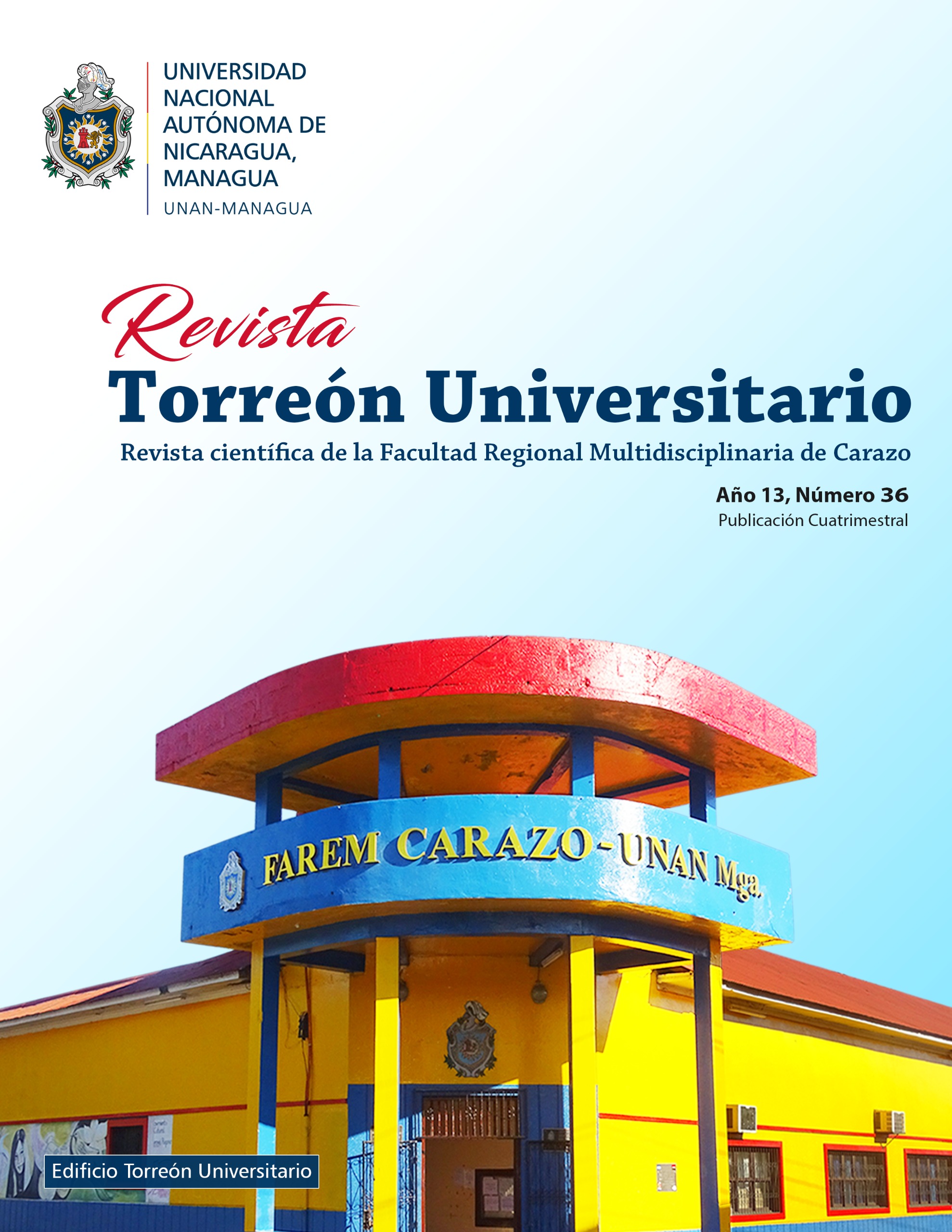Development of educational robotics in Nicaragua: Focus on secondary education and the use of robotics kits
DOI:
https://doi.org/10.5377/rtu.v13i36.17636Keywords:
education, design, learn, programming, roboticsAbstract
The integration of robotics in secondary education has been a growing trend in recent years. Robotics kits have become a valuable tool for teaching physics and math concepts in a more hands-on and visually appealing way for students. Robotics kits allow students to build and program robots to perform specific tasks. This gives them the opportunity to apply the theoretical concepts they have learned in class in a practical and tangible context. Additionally, students can experiment with different designs and programs to see how they affect the robot's behavior. The integration of robotics in secondary education can also help students develop important skills, such as problem solving, creativity, and collaboration. Working as a team to build and program a robot can be an enriching and motivating experience for students. In the area of physics, robotics kits can be used to teach concepts like kinematics, dynamics, and energy. Students can build robots that simulate the movement of objects in different situations and see how the robot's behavior changes based on the parameters they have programmed. In the area of mathematics, robotics kits can be used to teach concepts such as geometry, trigonometry, and linear programming. Students can build robots that perform complex mathematical calculations and see how these concepts apply in a practical context. In summary, the integration of robotics in secondary education can be a valuable tool to teach physics and mathematics concepts in a more practical and visually appealing way for students. Plus, it can help develop important skills like problem solving, creativity, and collaboration.
Downloads
References
El nuevo Dario. (2019). El Nuevo Diario. Obtenido de https://www.elnuevodiario.com.ni/nacionales/443685-robotica-nicaragua-cada-vez-mas-estudiantes-interes/
El Nuevo Diario. (2019). El Nuevo Diario. Obtenido de https://www.elnuevodiario.com.ni/suplementos/tecnologia/493007-universidad-nacional-ingenieria-fomenta-robotica/
El Nuevo Diario. (2020). El Nuevo Diario. Obtenido de https://www.elnuevodiario.com.ni/nacionales/438086-promueven-educacion-stem/
Fundación Teran. (2020). Fundación Teran. Obtenido de https://fundacionzt.org/programa-educativo/
Guzmán, & Herndandez. (2003). Metodlogía de la Investigación. México DF: McGraw Hill Interamericanal.
MINED. Obtenido de https://www.mined.gob.ni/mineduc/mi-robot-mi-amigo-una-experiencia-de-aprendizaje-en-robotica/
MINED. (2021). MINED. Obtenido de https://www.mined.gob.ni/mineduc/firman-acuerdo-para-fortalecer-la-educacion-en-tecnologia-y-robotica/
Moreno, I., Muñoz, L., Serracín, J. R., Quintero, J., Patiño, K. P., & Quiel, J. (2012). LA ROBÓTICA EDUCATIVA, UNA HERRAMIENTA PARA LA ENSEÑANZA-APRENDIZAJE DE LAS CIENCIAS Y LAS TECNOLOGÍAS . Universidad de Salamanca, 18.
Ramírez, P. A., & Sosa, H. A. (2013). Aprendizaje de y con robótica, algunas experiencias. Revista Educación, 21.
Sánchez, F. Á., & Guzmán, A. F. (2012). La Robótica como un recurso para facilitar el aprendizaje. Universidad de Salamanca, 17.
Uruguay, U. O. (2018). Universidad ORT Uruguay. Obtenido de https://fi.ort.edu.uy/blog/que-es-la-robotica-y-cuales-son-sus-usos
Published
How to Cite
Issue
Section
License
Copyright (c) 2024 Universidad Nacional Autónoma de Nicaragua, Managua

This work is licensed under a Creative Commons Attribution-NonCommercial-NoDerivatives 4.0 International License.
The authors who publish in this journal agree to the following terms.
- The author or authors of the articles, essays or research grant the National Autonomous University of Nicaragua, Managua (UNAN-Managua) the editing rights (copyright) of the submitted work, therefore the University has the exclusive right to publish the article for the entire copyright period.
- These copyrights/authors authorize Torreón Universitario Magazine and the University to edit and disseminate/publish the article in said Magazine, including printed and electronic reproduction, storage, retrieval and any other type of publication, and sources of secondary information as services. of summaries and databases, they also empower it to protect the article against unauthorized use for dissemination by printed or electronic media (PDF, HTML, EPUB, XML or others).
License for use of content
The magazine uses the Creative Commons Attribution-NonCommercial-NoDerivs 4.0 International License.
Under this statement:

This journal is licensed under a Creative Commons Attribution-NonCommercial-NoDerivatives 4.0 International License. It can be copied, distributed and transmitted publicly as long as the author and source are cited (Revista Torreón Universitario), it should not be modified or used for any commercial purpose. The full license can be found at http://creativecommons.org/licenses/by-nc-nd/4.0/.



